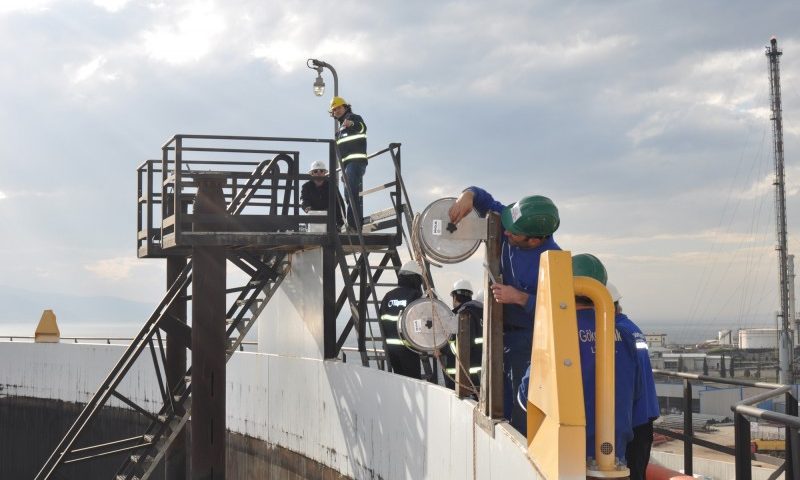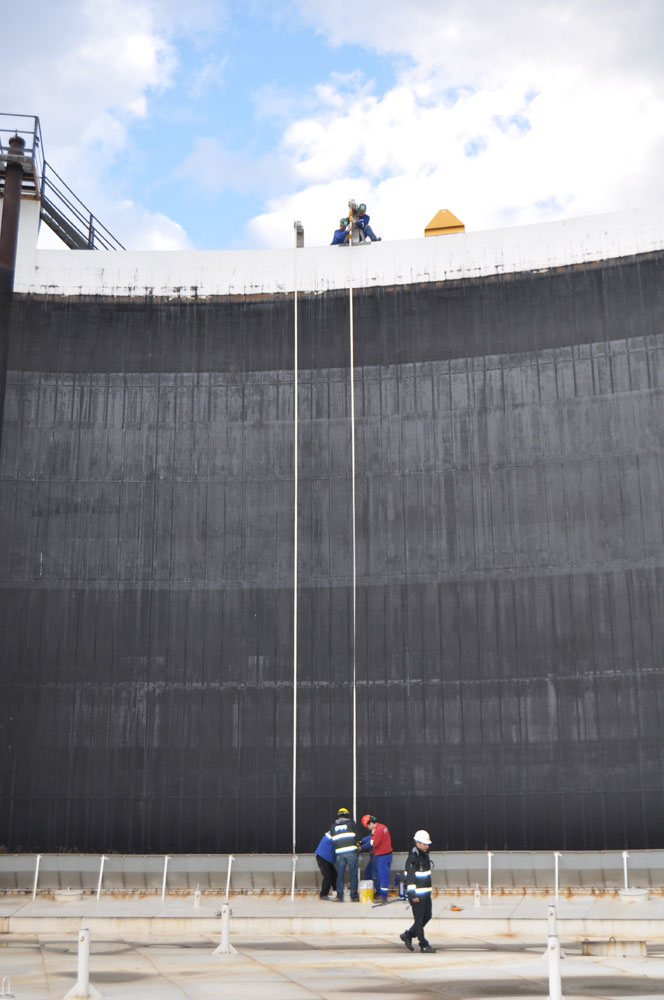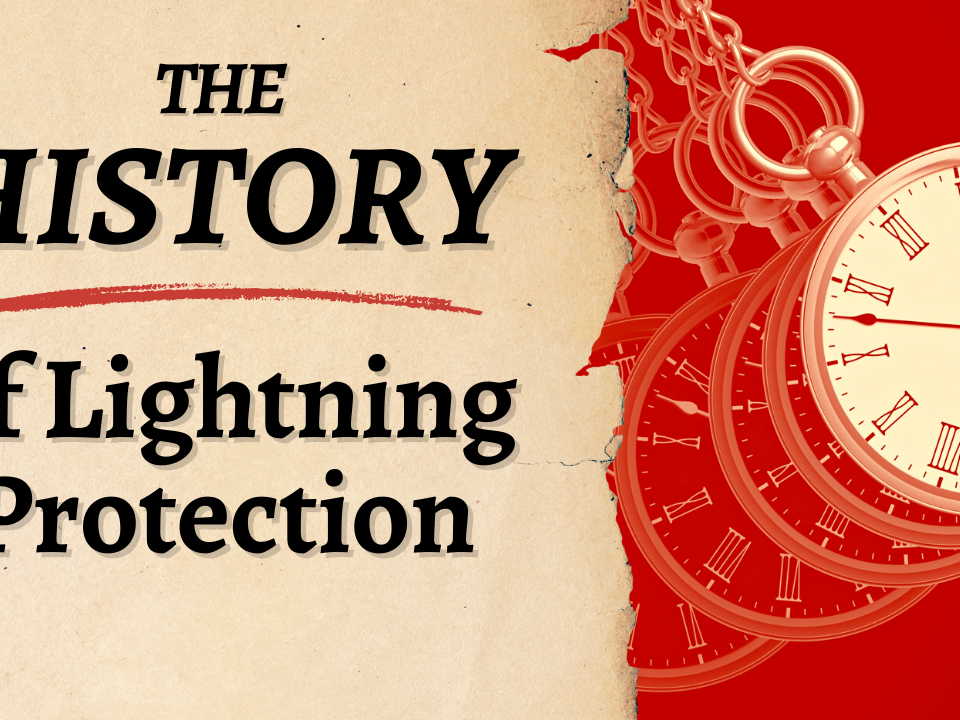- 100% AMERICAN MADE
- Lightning Protection - YOUR time, NOT Downtime

Lightning Rods are Old: NEW Lightning Protection Part 3
July 25, 2013
Lightning Blowing Up Oil and Gas Production Across America
August 8, 2013Overlooking Lightning Protection Can Cost You Millions

Installing RGA Lightning Protection at Turpas in Izmit, Turkey
By: Lightning Diva@Large
Research shows that over 82 million barrels of oil are produced globally each calendar day. That’s hundreds of billions of dollars worth of product that must be stored, commonly in floating roof tanks, and are waiting to be shipped. Although safety is a huge priority in the oil and gas industry, the risk of lightning is often overlooked. The oil and gas industry is one of the most vulnerable industries when it comes to lightning related risks, and can be extremely costly for those facilities that do nothing to protect against the powerful natural phenomena.
As global warming progresses, the threat of lightning is expected to increase in areas that become warmer and drier. In a study conducted by the Association of British Insurers in 2007, they predict a potential increase of 50% in lightning strikes by 2050. With that comes and increase of associated risks in the oil and gas industry. One lightning strike can cost a company anywhere from $500,000 to more 40 million dollars depending on the size and type of facility. While the cost of a lightning strike can be prohibitive, protection costs a mere fraction of that. It doesn’t matter what part of the world you are in or how often lightning events happen in your area, it only takes one strike to destroy precious product.
Oil and gas executives must be aware of these changes and take a proactive step towards protecting their companies, equipment and employees. That is why we are hosting the Second Lightning Protection Summit in October – so that Chemical and Petroleum executives can learn the danger lightning poses and how to plan, prepare and prevent against it.
The following article, featured in the Pipeline & Gas Journal last month, by Lightning Eliminators & Consultants CEO Avram Saunders explains how costly a lightning strike can actually be for a refinery or oil tanker. Just remember, a dollar of proper lightning protection is worth a million in repairs!
Lightning Protection: Pipeline & Gas Journal
Lightning, The Costliest Threat to Oil Tankers and Refineries
By: Avram Saunders, President & CEO, LEC Global, Inc., Boulder, CO | July 2013, Vol. 240 No.7
Why is lightning so often overlooked when talking about protecting the oil and gas industry? Its effects on a refinery, storage tank or compressor station can be catastrophic.
Lightning is an explosive, rapid event that releases large amounts of energy in just a few milliseconds with an unpredictable path. In a strike that terminates on or near a floating roof tank (FRT), for example, the current will flow in all directions and will vary in proportion to the lowest path of impedance. One unexpected arc across the roof-shell interface could ignite the fumes that are almost always present and as a consequence put that tank and an entire facility in immediate danger.
Fairly recent strikes to storage tanks in Texas, Kansas, North Carolina and Kentucky show what has become the norm: one strike sparks a fire resulting in millions of dollars in lost profit, product, replacement costs, government oversight and downtime.
A review of petroleum storage tank fires between 1951 and 2003 found an average of 15-20 fires per year are reported with about one-third attributed to lightning. Another study directed by oil industry companies found that “lightning is the most common source of ignition” in 52 of 55 rim seal fires studied. And the reality is that there are more tanks today than in 2003.
It’s not just the direct strike against a facility that needs to be taken into consideration when determining protection. Beyond the hard costs like the loss of product, the downtime following a strike and the replacement costs of the facility, what about the soft costs? They notoriously pile up and are rarely considered. They include:
- Lawsuits following accidents
- Loss of contracts that lead to a lower level of supplier/buyer confidence
- Increased governmental scrutiny that can mean more paperwork, fines and litigation
- Loss of confidence from the shipper community, lost revenue
- Mean-time-between-failure (MTBF), which greatly affects the sensitive electronic components that keep the facility online
A 2012 strike at a Bellevue, OH refinery sparked a fire on a trailer loaded with scrap magnesium in the middle of the night. It had to burn for hours and the surrounding areas, roads, and schools were closed. Indeed, local officials had to ready an evacuation plan for a nearby hospital because of the toxic fumes in the air. Another oil tank fire in Rockport, TX caused many of the same issues. It also wasn’t just one tank; multiple other tanks were involved once the blaze took off.
The total cost for these examples are not easy to determine. But one point cannot be ignored: if the companies in question had lightning protection in place, the worries of lost profits or lawsuits would be minimal. Instead, the relatively small cost to protect against lightning – typically less than $30,000 per tank – could have saved them many millions of dollars.


